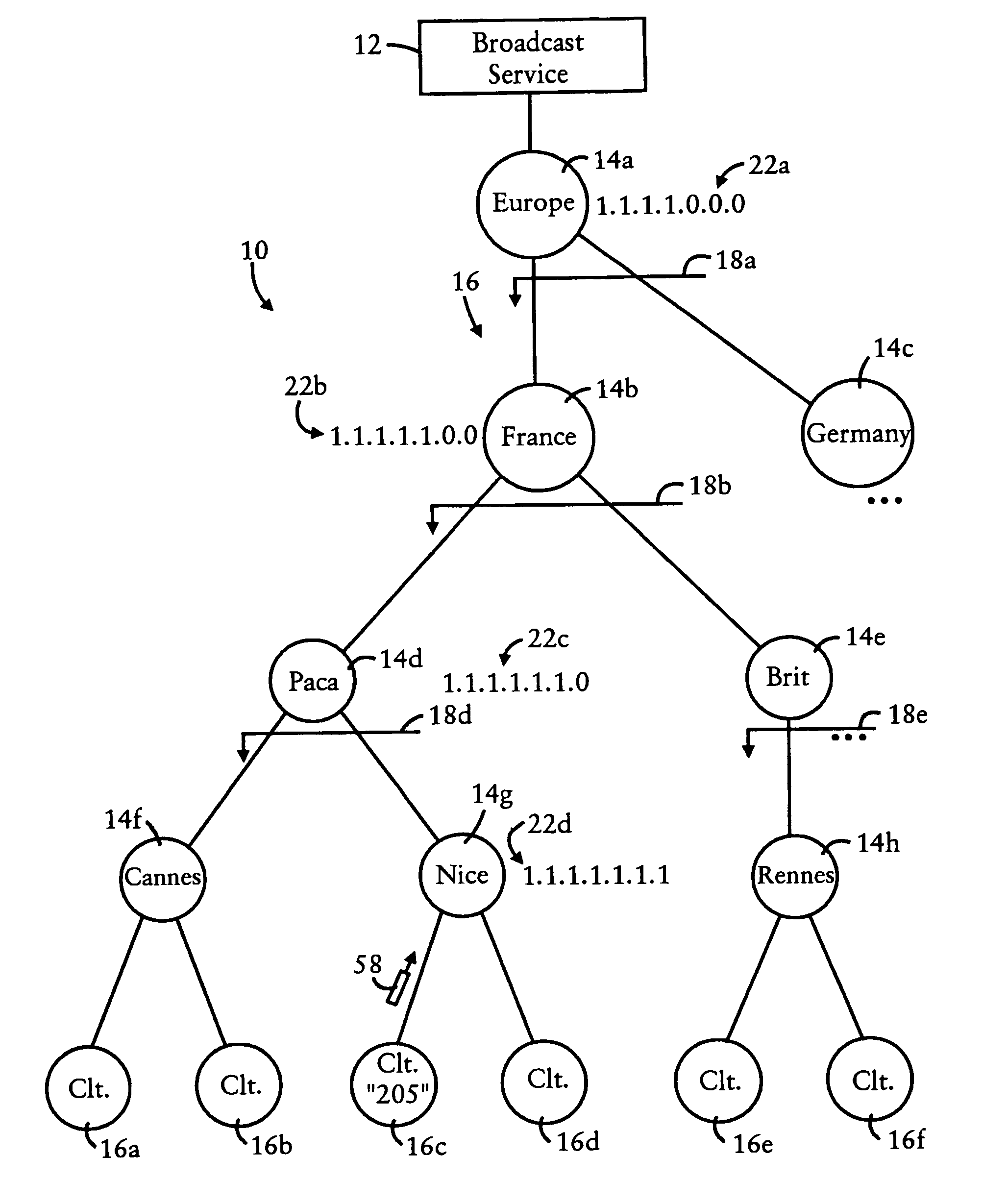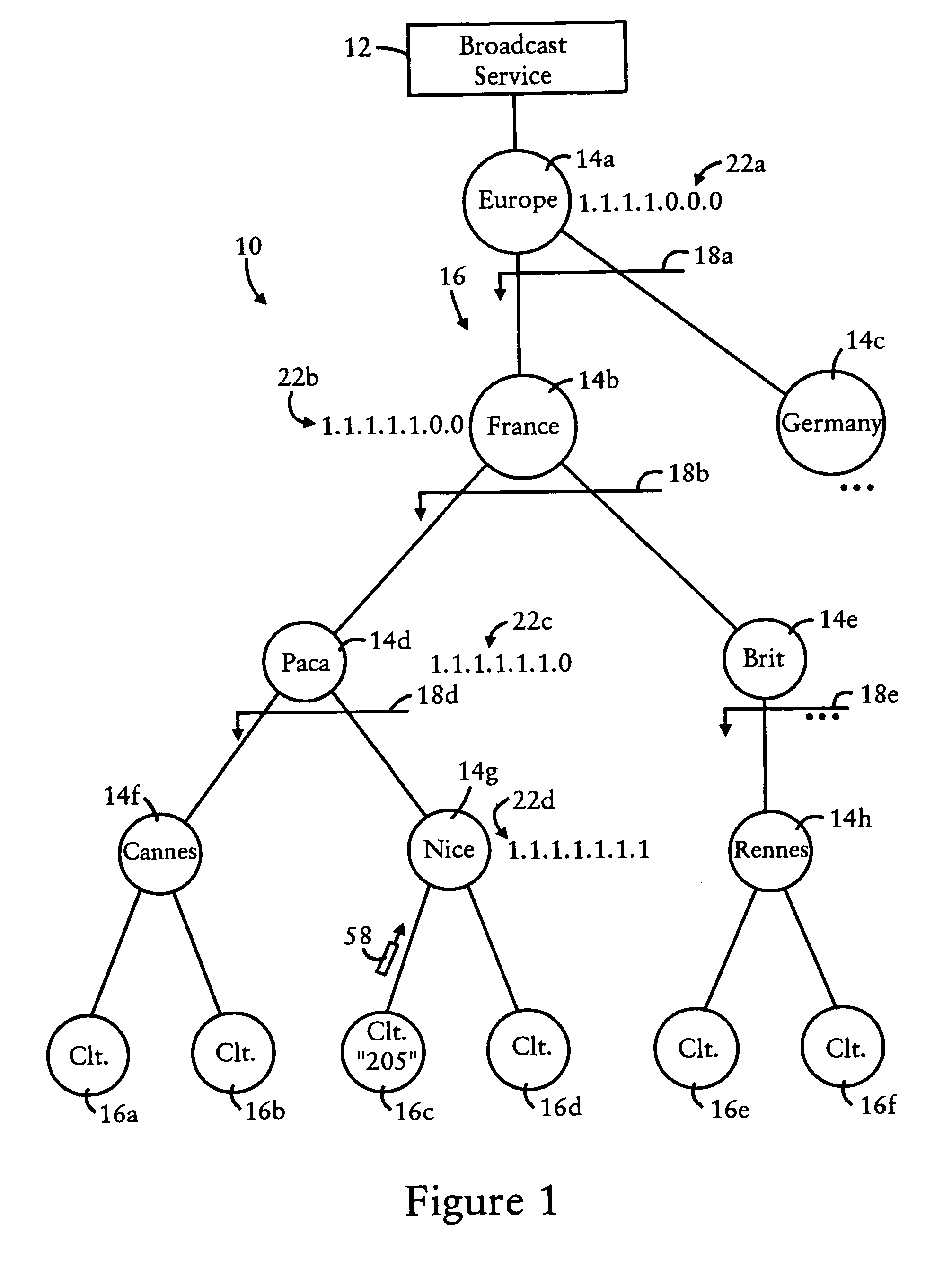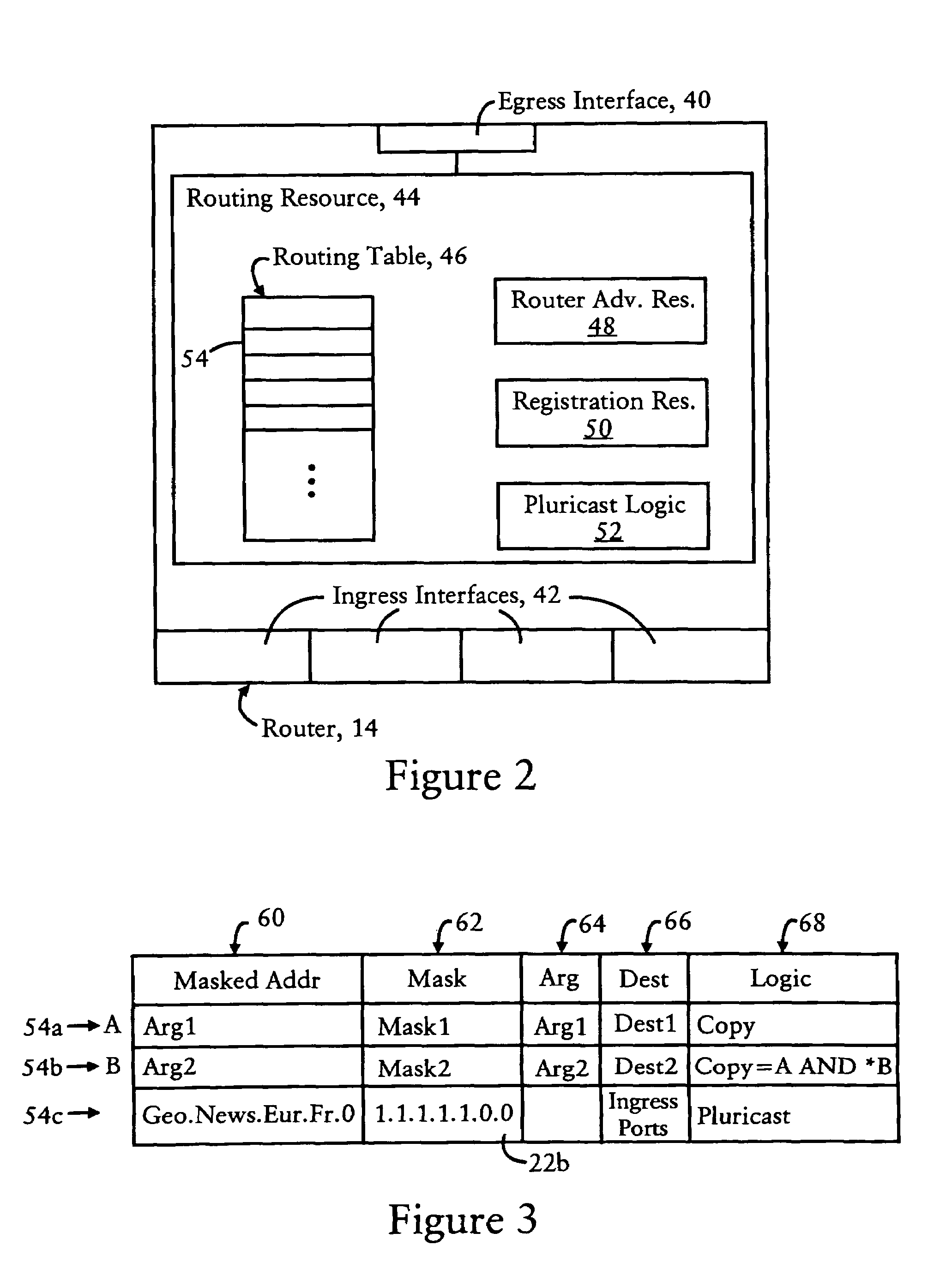Arrangement in a router for establishing multicast group hierarchy and coalescence
a router and multicast technology, applied in the field of multicasting and video distribution techniques, can solve the problems of limited broadcast capabilities of a given host computer, limited multicasting capacity, network-directed broadcast capabilities limited to the members of the subnet,
- Summary
- Abstract
- Description
- Claims
- Application Information
AI Technical Summary
Problems solved by technology
Method used
Image
Examples
Embodiment Construction
[0024]FIG. 1 is a diagram illustrating a content network 10 having a broadcast source 12 and routers 14 configured for distributing packets for reception by destination clients 16, according to an embodiment of the present invention. Each of the routers 14 are arranged according to a tree-based topology within an aggregation realm 18, illustrated in FIG. 1 as a Geodetic (i.e., geographic-based) addressing scheme. As described below, the “addresses” refer to identifiers for content, as opposed to network addresses of client devices.
[0025]As illustrated in FIG. 1, the top-level router 14a distributes packets within a prescribed aggregation realm 18a having a continent-based aggregation level (e.g., “Europe”). The routers 14b and 14c are child routers to the top-level router 14a, each router 14b and 14c having a country-based aggregation level (“France” for router 14b and “Germany” for router 14c). In other words, the router 14a is a parent router to the routers 14b and 14c, and the ro...
PUM
 Login to View More
Login to View More Abstract
Description
Claims
Application Information
 Login to View More
Login to View More - R&D
- Intellectual Property
- Life Sciences
- Materials
- Tech Scout
- Unparalleled Data Quality
- Higher Quality Content
- 60% Fewer Hallucinations
Browse by: Latest US Patents, China's latest patents, Technical Efficacy Thesaurus, Application Domain, Technology Topic, Popular Technical Reports.
© 2025 PatSnap. All rights reserved.Legal|Privacy policy|Modern Slavery Act Transparency Statement|Sitemap|About US| Contact US: help@patsnap.com



